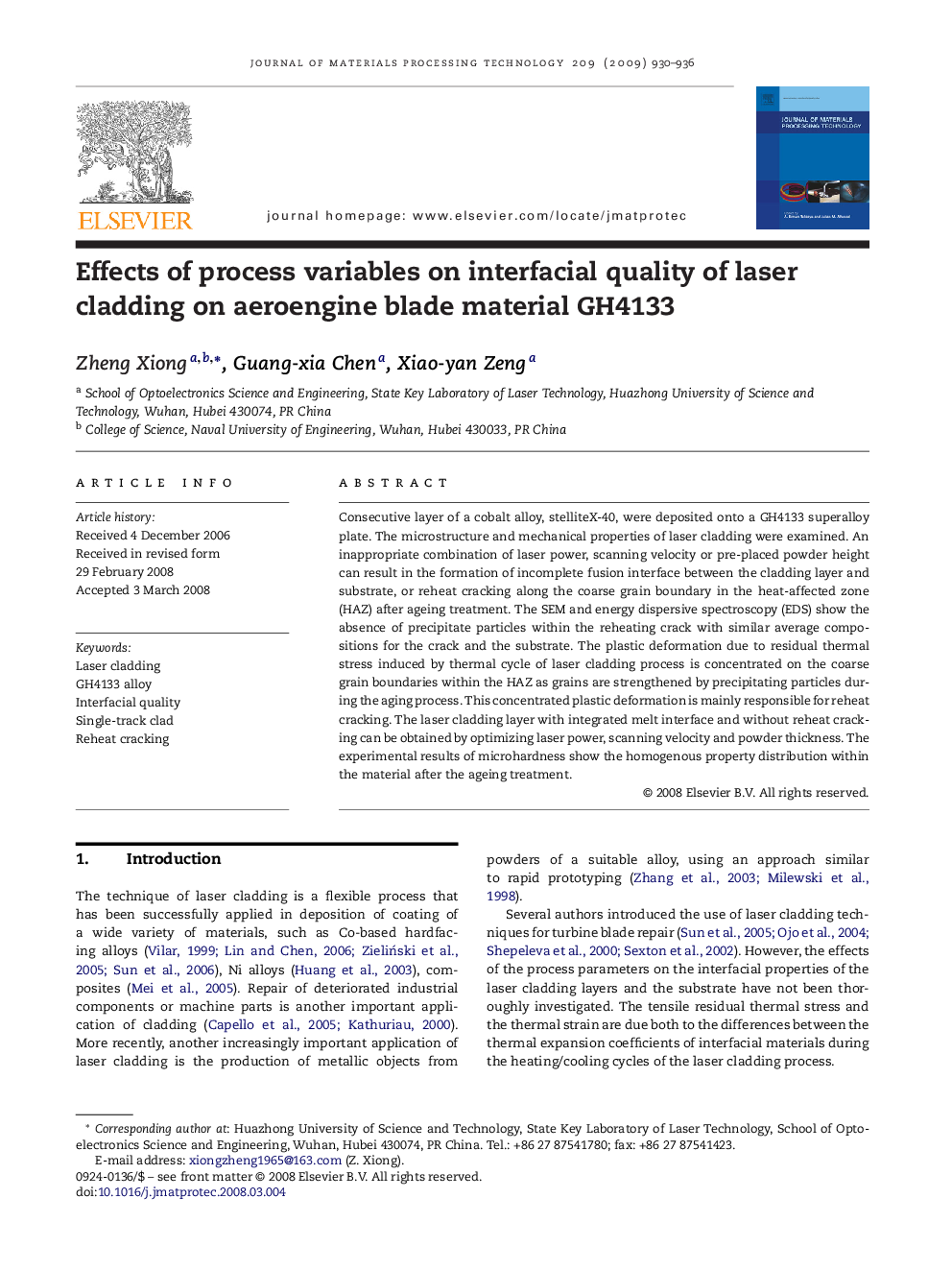| Article ID | Journal | Published Year | Pages | File Type |
|---|---|---|---|---|
| 796195 | Journal of Materials Processing Technology | 2009 | 7 Pages |
Consecutive layer of a cobalt alloy, stelliteX-40, were deposited onto a GH4133 superalloy plate. The microstructure and mechanical properties of laser cladding were examined. An inappropriate combination of laser power, scanning velocity or pre-placed powder height can result in the formation of incomplete fusion interface between the cladding layer and substrate, or reheat cracking along the coarse grain boundary in the heat-affected zone (HAZ) after ageing treatment. The SEM and energy dispersive spectroscopy (EDS) show the absence of precipitate particles within the reheating crack with similar average compositions for the crack and the substrate. The plastic deformation due to residual thermal stress induced by thermal cycle of laser cladding process is concentrated on the coarse grain boundaries within the HAZ as grains are strengthened by precipitating particles during the aging process. This concentrated plastic deformation is mainly responsible for reheat cracking. The laser cladding layer with integrated melt interface and without reheat cracking can be obtained by optimizing laser power, scanning velocity and powder thickness. The experimental results of microhardness show the homogenous property distribution within the material after the ageing treatment.
